In the middle of a growing pack: 11 is Alive in Atlanta
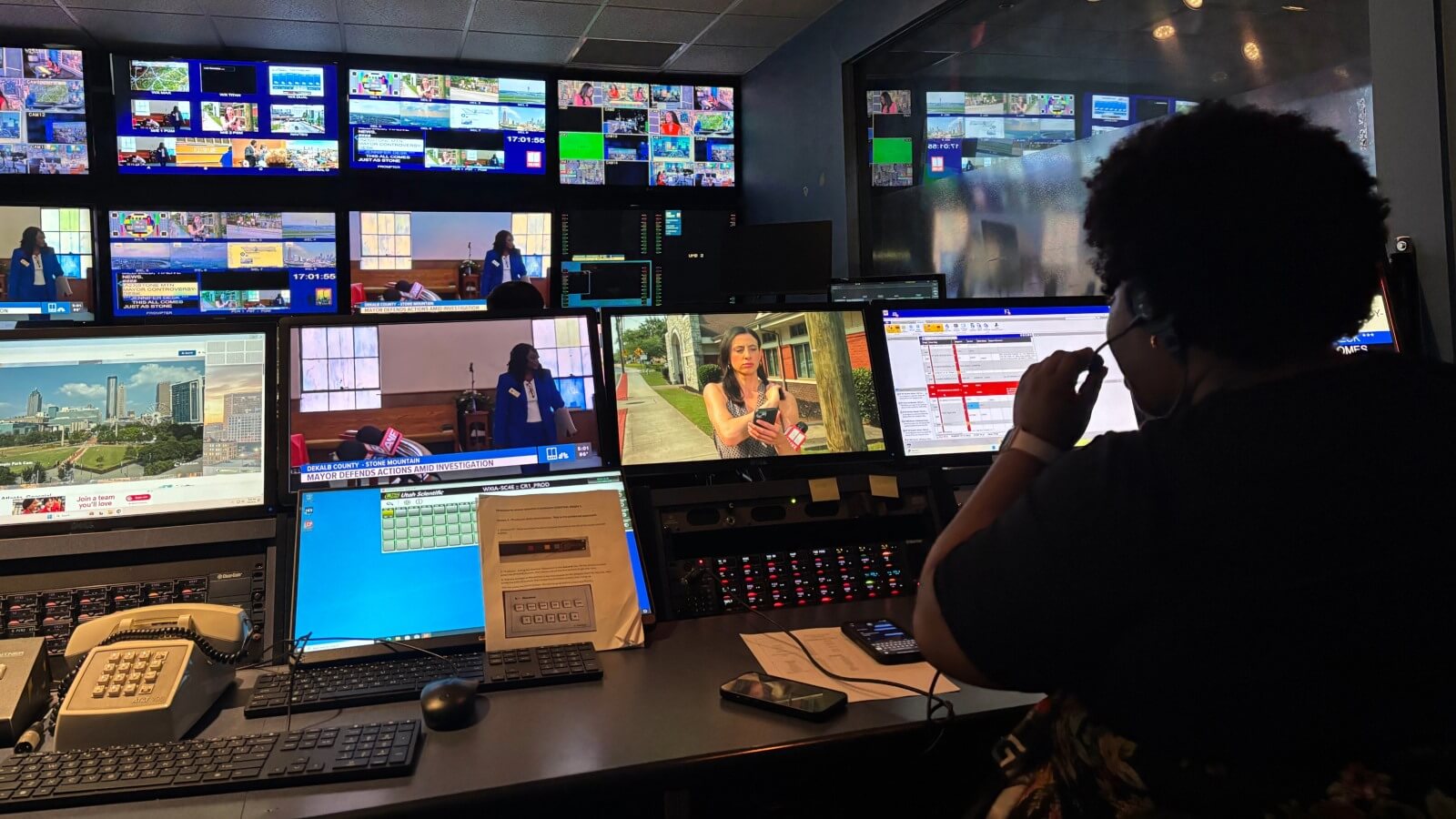
By Kevin Finch,
Associate Professor, Former News Director
On a muggy morning in early June, the top weather story in Atlanta was smoke from Canadian wildfires threatening Georgia. Weather goes first in the morning and afternoon news meetings at WXIA-TV (TEGNA/NBC).
But that week, there was an undercurrent, not borne by winds, but trade news that WXIA was getting a new competitor. WUPA has been owned by CBS for years, but the station did not have its own news department and did not carry CBS programs.
In fact, the CBS affiliation has belonged to WANF, formerly WGCL. Like WUPA, WANF is a UHF station that has never enjoyed the ratings success of now Fox-owned WAGA, a long-time CBS affiliate that was part of possibly the biggest nationwide affiliation switch ever. That occurred in 1994 after Fox scored its first NFL contract and CBS affiliates in Atlanta and other NFL cities bolted for Fox.
But as of August 16, WUPA is carrying CBS programs AND is starting up the fifth English-language local TV news operation in Market No. 7.
Gray-owned WANF announced it would expand its weekly schedule of newscasts under its relatively new banner “Atlanta News First.”
FIVE local TV newsrooms competing in an already tough business climate.
Back in June, veteran news director Carol Fowler was director of content, the top news executive at WXIA. (On June 30, she was named a corporate vice president of regional content for TEGNA, which is in the midst of an acquisition by Nexstar. Rick Gevers reported Aug. 11 that Todd Spessard has been named as Fowler’s replacement.)
Fowler says the station — known as 11 Alive! — is the third-place shop overall in what had been a four-station race, now five. Five stations fighting over fewer broadcast news viewers and a fractured audience that the station must reach via streaming, YouTube, a website and more.
Fowler says it is “harder than ever to grow ratings.”
“We measure success by share of the audience. … You just want to get as much of a larger share of the audience as you can.”
But there is room for growth on other platforms, something that TEGNA has emphasized for years.
It shows up in those morning and afternoon news meetings when people who are directly involved in those platforms brief everyone else on what’s happening.
One meeting, multiple platforms
The digital producer announces what stories have legs on the web, including a WXIA anchor changing on-air shifts at the station, the web folks localizing a story on tomatoes, and new eruptions of Mount Etna in Italy.
The streaming producer announces what news items will go live on that platform at various times that day.
Fowler says the planned streams are in addition to any weather events.
“We’ve stopped pushing to the website and we push to the 11 Alive Plus stream instead.”
WXIA’s digital team also tracks user interactions: Which subjects are the most popular search topics as of that morning?
Managing Editor Phillip Hendrix guides coverage of the usual diet of news conferences, made-for-TV news events or court cases. Then, it’s time for follow-ups and pitches.
Producers for the 4, 4:30, 5 and 6 p.m. newscasts listen to the daily news options and pay close attention to the reporters’ ideas.
Chase Houle is pitching a follow-up to his story from the weekend. He’s young, he’s passionate and he doesn’t mind confrontational interviews.
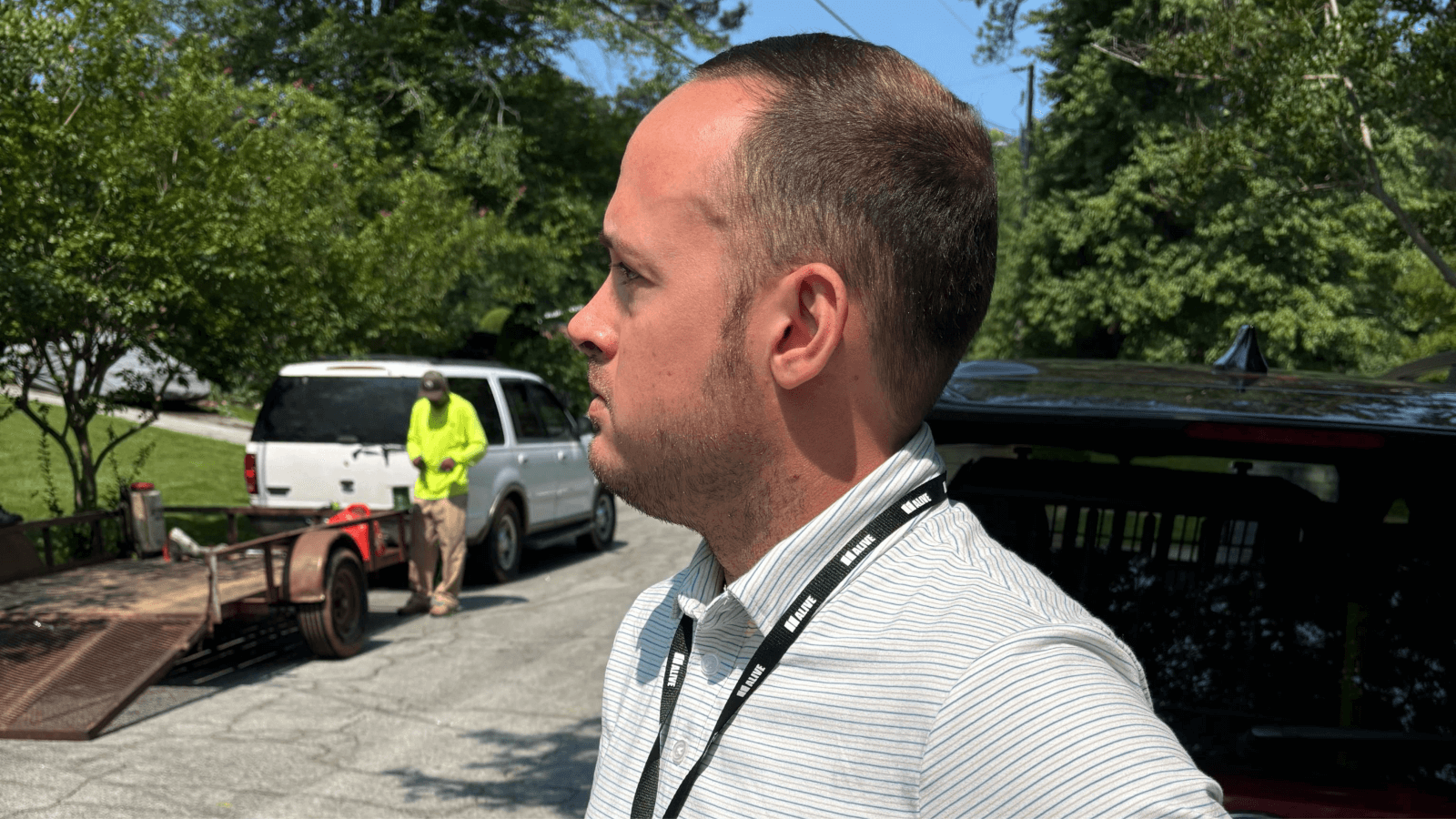
WXIA MSJ Chase Houle works on a story in Atlanta last June. But on this day, he doesn’t have to shoot his own TV video. All photos by the author.
He thinks he might have another edgy interview if Hendrix and the producers give him the go-ahead to follow up on Saturday’s story about illegal squatting in a large home in a late 20th Century neighborhood full of mostly well-manicured lawns and large to medium-sized houses.
Houle is what TEGNA calls an “MSJ.” That’s Multi-Skilled Journalist, the company’s version of an MMJ, Multi-Media Journalist.
Except today, he won’t work by himself. Vacations and illness have left the roster balanced, so Houle can work with photographer Cody Dallas as they wait near the home only recently abandoned by the people Houle reports took it over without anyone’s permission, notably the homeowners.
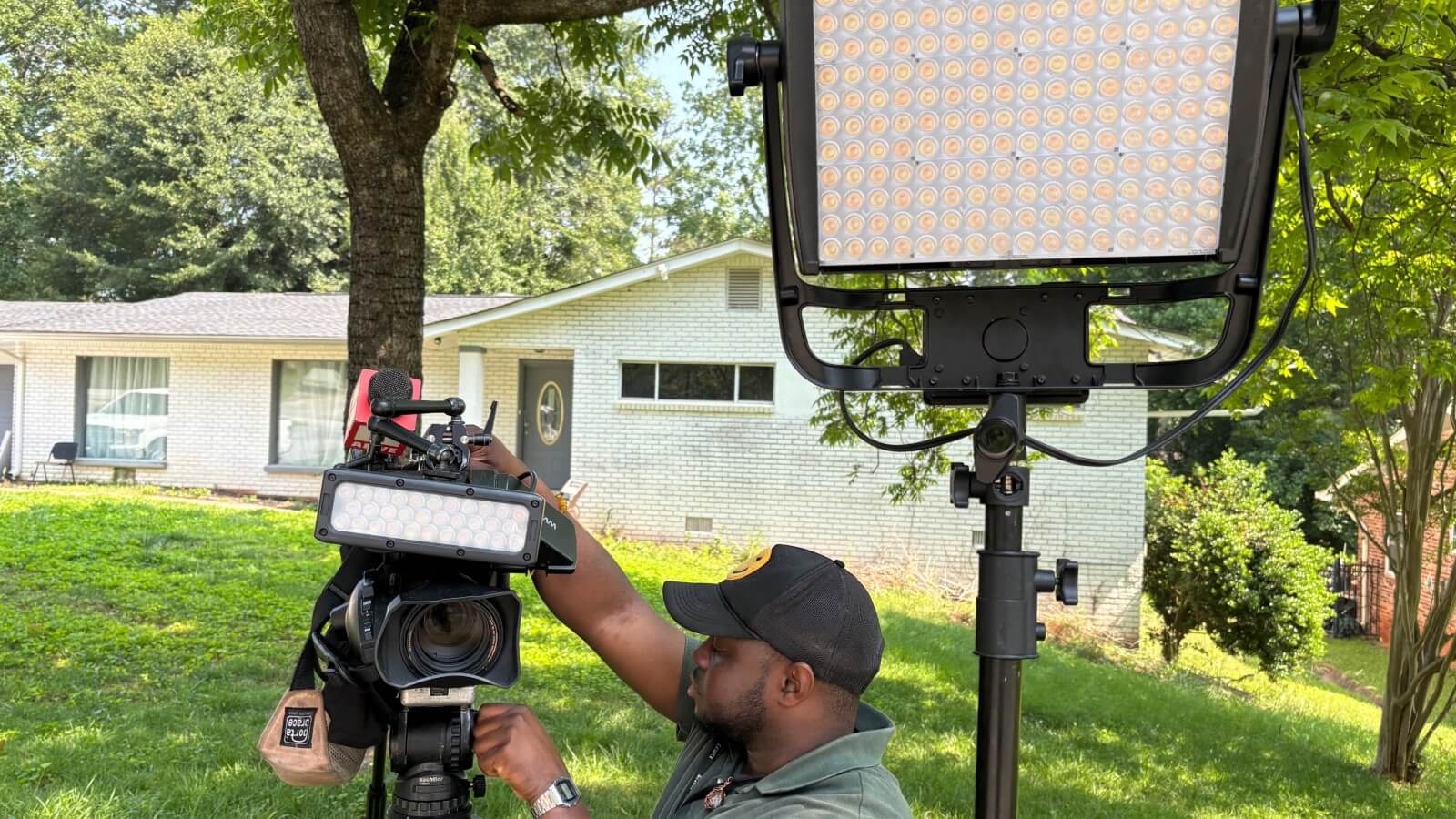 WXIA photographer Cody Dallas sets up his extensive gear for a pair of interviews.
WXIA photographer Cody Dallas sets up his extensive gear for a pair of interviews.
He gets the green light and he and Dallas, along with this writer, return to the house that had been taken over by strangers.
Houle gets the benefit of Dallas’s hustle, attention to detail, and a cargo area jammed with full-sized gear, including a large rectangular light and stand, heavy-duty camera tripod, multiple wireless mics and more.
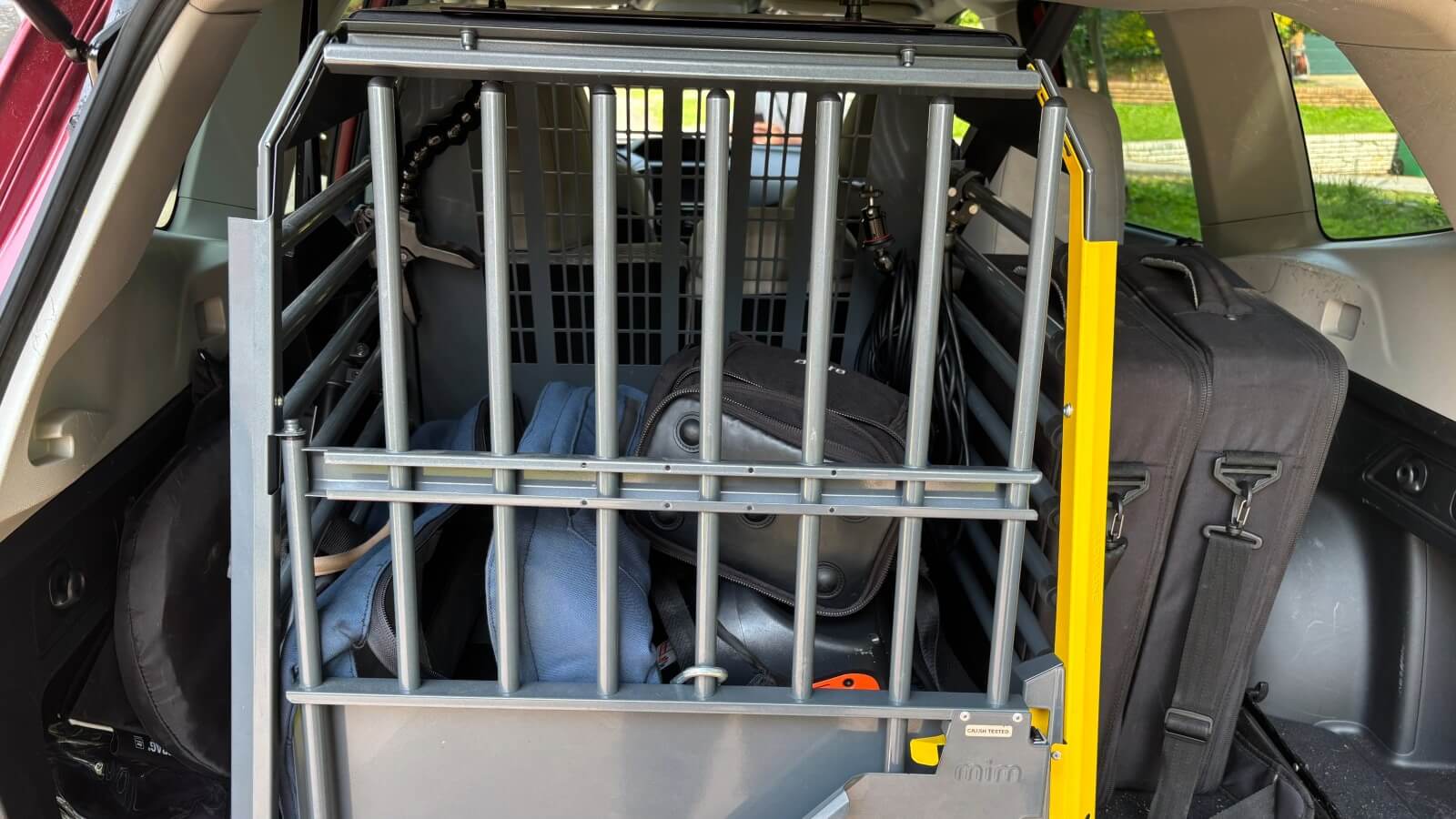
A peak inside the SUV cargo area WXIA photographer Cody Dallas uses to store his formidable gear.
Houle arrived at WXIA earlier this year after stops in Indianapolis, Rochester, N.Y., and Champaign, Ill.
A report from long-time RTDNA TV and radio survey guru Bob Papper finds Houle’s role has become less common.
Market size and MMJs
Overall, according to Papper’s 2025 RTDNA/S.I. Newhouse School of Public Communications Annual Survey, newsrooms that “mostly use” MMJs are down three points, continuing a multi-year trend, while newsrooms that “do not use” have increased almost five percentage points.
Papper said in an email, “It’s not that they're disappearing, but we appear headed back to older days when they were standard in small markets” and less common in larger ones.
“Safety is a major motivator on this,” said Papper.
By market size, WXIA fits in with the 15 percent of stations in markets 1 – 25 that use “some” MMJs.
Back on the street in Atlanta, Houle and Dallas are productive before any police or homeowners come to check on the property. Houle shoots video on his phone—a vertical video to be used for streaming, and/or the station’s social media sites.
If he were on his own as an MSJ, Houle would still shoot that video but might also shoot some horizontal phone video for use in his TV story.
Why the difference? Flip baseball Hall of Famer Willie Keeler’s advice to “hit ‘em where they ain’t” to reach ‘em where they are. If your viewers happen to be streaming videos on their phone, they’re holding the phone vertically.
The Associated Press is now featuring vertical videos — a la TikTok — in its promotion and in tiered membership packages.
But when viewers are on the couch, watching your newscast, the aspect ratio is decidedly horizontal. So, you want to fill up all that 16 X 9 screen.
Dallas, meanwhile, is shooting b-roll of the house and the neighborhood, until the first of two family members arrives. The team gets both on camera and they head back to the station, an imposing hilltop edifice with a staffed guard shack and more security at the front door.
Inside, the work continues on stories—selection, updates, and more.
“Desk staff are journalists, too,” Hendrix said. He adds they do the vital work of paring down the story option list, checking status of developing stories, and tracking down the when and where for news conferences and court cases.
Distributing all that news
But much of the work inside the building is distributing those stories, video elements and even entire newscasts across many platforms.
With so many newscasts jammed back-to-back all afternoon, and even some streaming-only productions, WXIA maintains two complete on-air studios, toggling between them each time a new producer and director roll a new open.
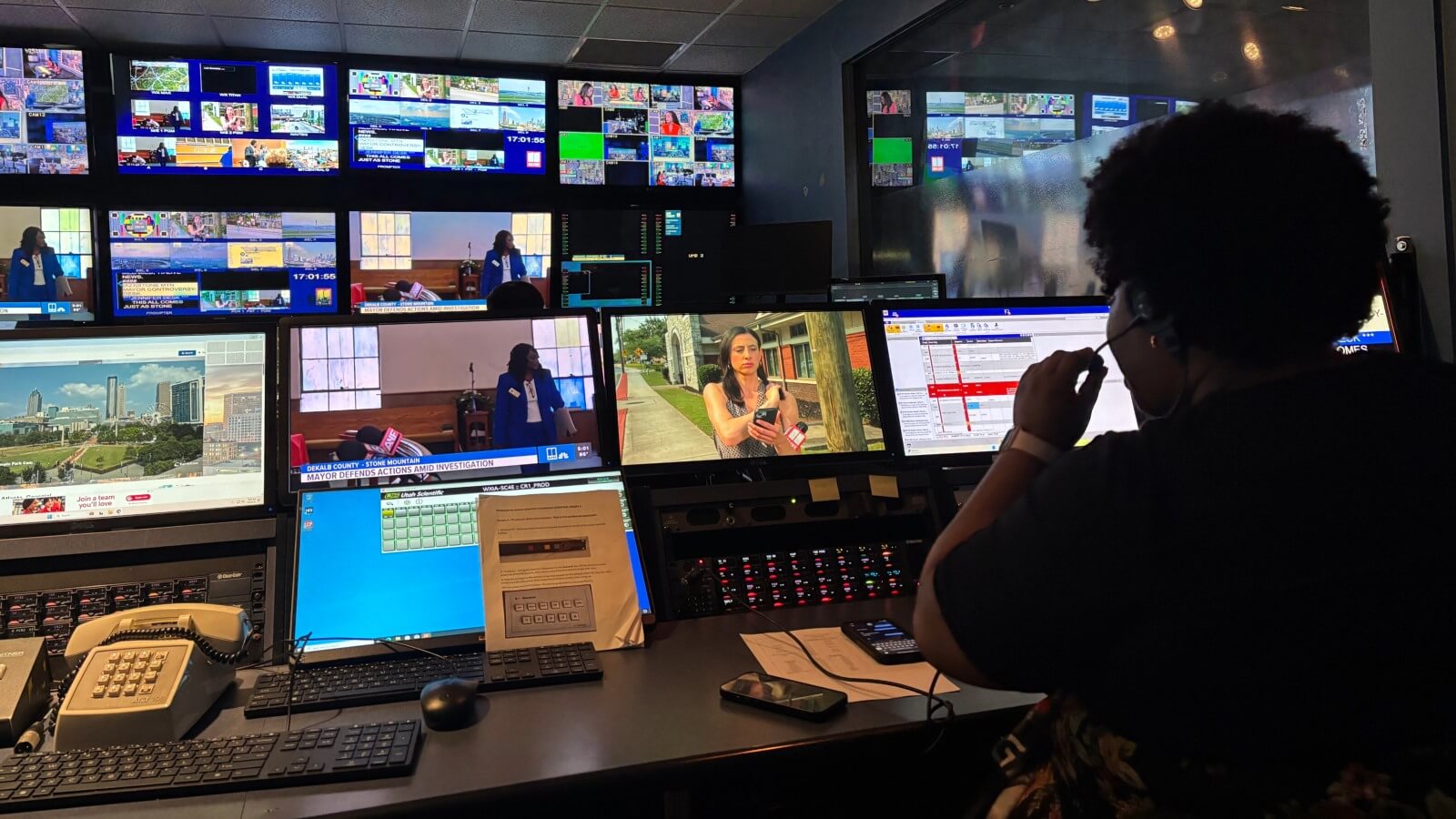
Quaniqua Epps-Brown produces one of four live TV newscasts between 4 and 6:30 p.m. weekdays at WXIA.
Before that open rolls, both producer and director can work together in the control room in the minutes leading up to the newscast without getting in the way of the live production in progress.
Back in the newsroom, Senior Executive Producer Precious Goss is simultaneously monitoring and copy editing all four shows before they go live. She communicates directly with the producers and uses Microsoft Teams for IMs among staff on a particular story.
Senior Producer Lauren Wortman, working on the 6 p.m., said the competitive aspect of life in a large TV market is still there but it has evolved. She notes WXIA, WAGA, and WANF share a helicopter. The station also participates in a news co-op called LNS, in which stations share a photographer to cover some news events from which all the stations would like video.
The concept here is that it frees stations to cover news stories that distinguish one station from the next while still getting the routine news on the air.
Other tools for differentiation include the station’s special projects unit, which works on investigative and consumer reporting. WXIA puts a great deal of faith—and resources—in that unit. A special projects director leads four investigative reporters, one enterprise reporter, four photographers, and two producers who must turn promotable stories year-round.
Pressures are different, too. In large markets across the country, the great build-up to the November, February and May books is part of the past. Instead, every day is a ratings day.
The investment follows the money. Fowler says broadcasting is “still how TV makes its money primarily. The linear audience may be waning and moving toward streaming. Yet, the lion’s share of the revenue to support the news gathering, still flows from ad sales on traditional TV.”
Other numbers are growing significantly. Jonathan Raymond, digital content director, throws out some hefty figures.
Two-and-a-half million, for example. That’s the number of WXIA’s YouTube subscribers.

WXIA has since increased this figure 150 percent, almost matching the 2.7 million households in the market.
Raymond said you don’t get a fee per subscriber, but the station still makes money on the ad revenue sharing arrangement YouTube has with successful channel operators.
Another number: 150,000. That’s the number of viewers on its home page each week during the dog days of summer. Raymond says it’s around 200,000 when fall routines resume, and it’s even higher, he says, when weather is the driver. Weather shows up on the top of the home page with a meteorologist presenting a weathercast.
Raymond says there are some TEGNA home pages reaching more than a million.
The station website, the YouTube channel, social media sites, Apple TV, Roku, Amazon Firestick and other streaming services: Different devices for different slices of the audience.
And Raymond says with vastly different expectations for each platform.
“What’s going on …It’s a fundamental question for a lot of people. If you can answer it, you’ll have an audience.”
Viewers on the WXIA YouTube channel don’t want to watch produced newscasts and other programs, Raymond said. But viewers on Apple TV want a newscast. “They want the day’s stories.”
“It suggests they do want the traditional broadcast, but not at 6 on TV,” Raymond said.
If one person epitomizes immersion in the multi-platform world of local TV in the 2020s, it might be Danielle Moss. She is a meteorologist who also anchors traffic coverage.
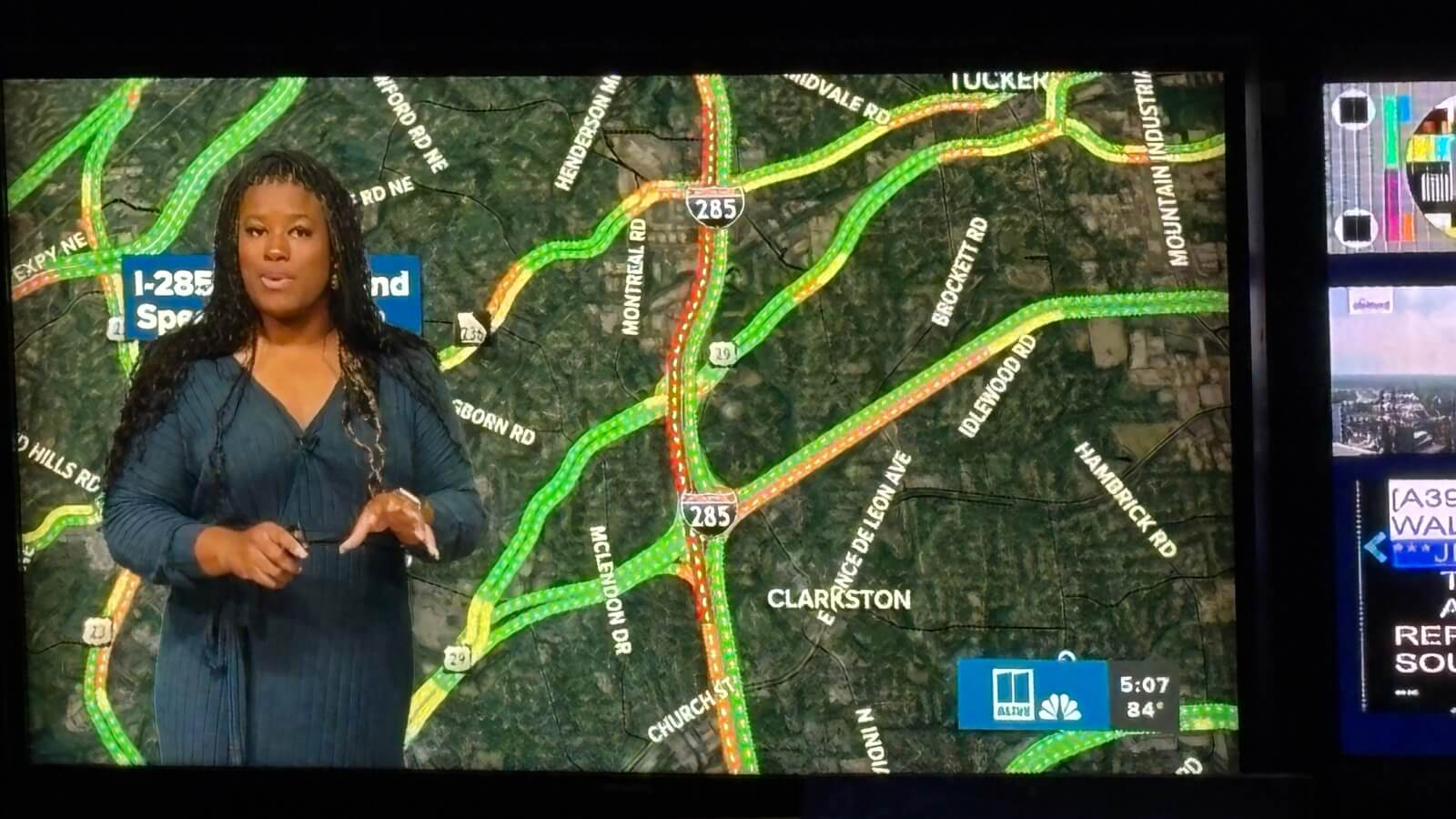
Meteorologist Danielle Moss anchors one of many traffic segments on WXIA’s late afternoon and early evening newscasts.
She handles weekend evening meteorology duties on WXIA and for TEGNA's Louisville station, WHAS. On Monday – Wednesday, it’s traffic on WXIA and filling in for weather. She also does weather updates on the station’s Facebook page and produces and anchors a weekly half-hour weather program for streaming.
“The work never stops,” said Moss.
Meteorologist, anchor, reporter, social media contributor and streaming creator. “Denisha (Thomas, news director) says I’m a Swiss Army knife.”
Moss may be an extreme example but many of the approximately 90 staff members at WXIA do their jobs differently from when they started in TV news. Even a senior anchor like Ron Jones doesn’t just sit at a desk anymore. He hops from newsroom camera to studio and back, depending on the newscast and whether he is reading a story or a promo.
Others, including Jason Rodgers, the station’s streaming producer, are doing a job that did not exist just a few years ago.
In the town that invented cable TV news, viewers are cutting the cord but still watching news in one form or another on different platforms. Raymond says some will watch a trial as it is streamed live and raw. Others want a professionally curated presentation (we call it a newscast) but when they feel like watching—and not on TV.
Many just drop in to watch a quick weather report or a single story and then they’re gone.
The key is not just brand extension, but cumulative audience growth across platforms and, in many cases, increased revenue. Especially when the Atlanta advertising pie keeps getting sliced into smaller pieces.
Editor’s Note:
This is the first half of a two-part report by RTDNA member and former news director Kevin Finch, an associate professor of journalism at Washington and Lee University. Kevin wanted to measure the pulse of a couple of large market TV newsrooms, going beyond the statistics to see how they cover news, what the priorities are, and what daily life is like in a newsroom these days. He chose two shops—one corporate-owned, one family-owned, one north and the other south, one an NBC affiliate, the other, ABC. Next week, he will report on KSTP in the Minneapolis-St. Paul market.
